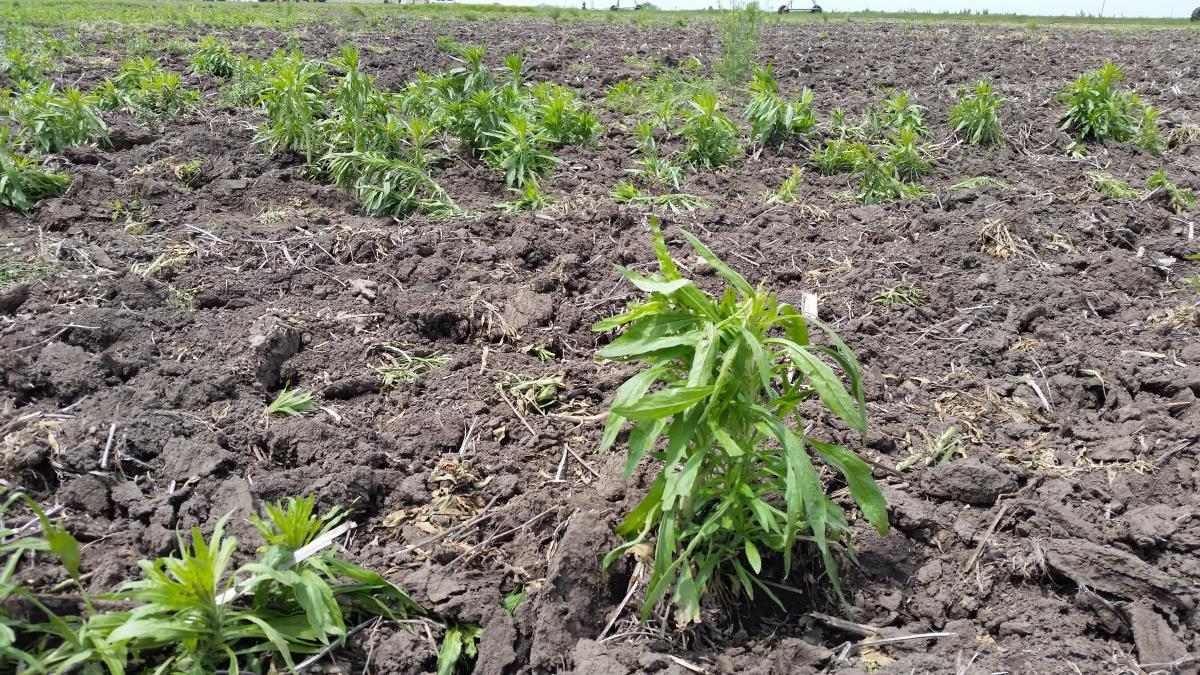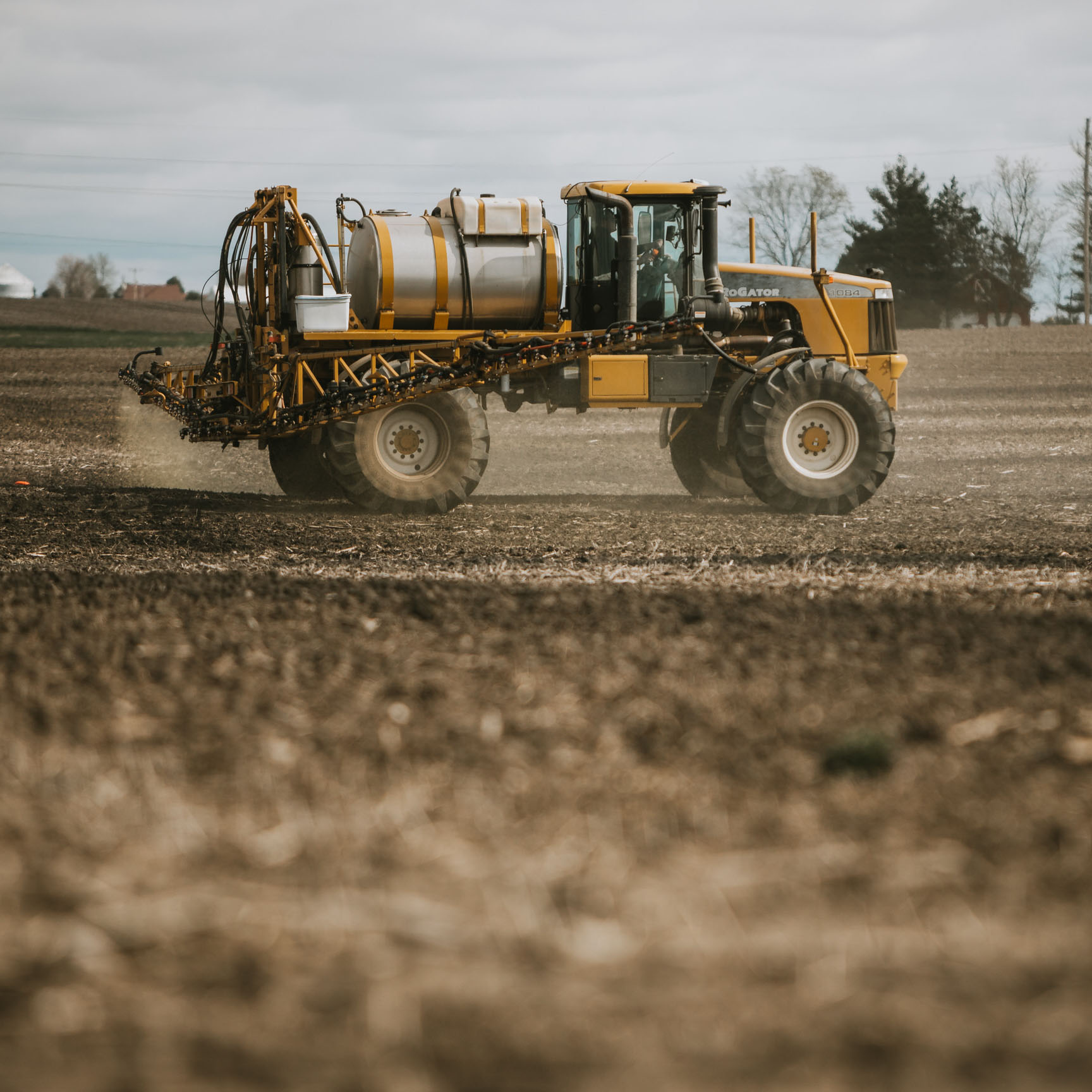SPRING BURNDOWN CONSIDERATIONS FOR MAXIMUM WEED CONTROL
Spring is on its way, and the weather outlook for the planting season is looking just right.
It’s almost go time for #plant23.
But before you get too excited, make sure you check off all the necessary items on your spring prep to-do list, starting with proper weed control.
As we head into spring, day length and temperature will start to gradually increase – and this empowers weeds to grow quickly and aggressively. Winter annuals that have been lurking throughout the offseason will steal soil moisture, tie up nutrients, and make planting more difficult.
So, before you fire up the tractor and attach the planter, get out in your fields, identify the weed population, and determine if it warrants a spring burndown application.
Let’s explore what a pre-planting burndown application can do for weed control.
THE BENEFITS OF A SPRING BURNDOWN
 A spring burndown application can manage winter annual and emerging weeds before they
become too difficult to control. For example, marestail (horseweed) becomes exceptionally difficult to control once it hits 4-6 inches tall
and establishes deep rhizomes and spores. These parts help the weed regrow even if you’ve implemented control methods.
A spring burndown application can manage winter annual and emerging weeds before they
become too difficult to control. For example, marestail (horseweed) becomes exceptionally difficult to control once it hits 4-6 inches tall
and establishes deep rhizomes and spores. These parts help the weed regrow even if you’ve implemented control methods.
Along with weed control, a spring burndown application can help improve soil attributes for the incoming crop, such as moisture and texture. If you decide far enough in advance to make an application (4-6 weeks before planting), plant material will have time to properly decompose, which creates a clean field for planting and a proper seedbed. In addition, a burndown application in the spring can help preserve soil moisture. In periods of little to no rain, the planted crop can use that extra moisture to maximize yield.
A spring burndown application can help keep weed flushes from getting out of control. This reduces the need for more expensive chemical mixes or tillage passes and allows you to get back to planting more quickly and have more control over your timeline.
THE LIMITATIONS OF A SPRING BURNDOWN
Burndown applications without residual products can set the stage for early summer annual weed flushes. So, an additional post-planting application is always recommended to control weeds that grow in spring and summer, such as crabgrass, morning glory, waterhemp, and Palmer amaranth.
Make sure not to damage your crop: consult the restrictions and product labels on the necessary residual herbicides. Before applying, you’ll also want to take into account planting intervals, crop rotation methods, and days before planting.
The addition of cover crops can also present challenges to spring burndown applications. Some conservation programs have application timing requirements that farmers should check on prior to the season. Additionally, if your cover crop goal is to generate large amounts of plant mass, applying a burndown application could cause too much soil moisture – and unfavorable planting conditions.
WHEN YOU SHOULD MAKE APPLICATIONS
 Ideally, spring burndown applications should be made 4-6 weeks prior to planting. Applications can be delayed, if poor environmental conditions (such as wet soils) are present. For best results you should make an application when daytime temperatures are above 55 degrees,
and nighttime temperatures are above freezing (32 degrees). Herbicides work slower under cool conditions, so if Mother Nature brought a few days of chilliness, wait for warmer days to apply.
Ideally, spring burndown applications should be made 4-6 weeks prior to planting. Applications can be delayed, if poor environmental conditions (such as wet soils) are present. For best results you should make an application when daytime temperatures are above 55 degrees,
and nighttime temperatures are above freezing (32 degrees). Herbicides work slower under cool conditions, so if Mother Nature brought a few days of chilliness, wait for warmer days to apply.
Keep an eye on the forecast for more favorable temperatures and conditions to make an application, up to days before planting. If a delay is not possible, though, it may be necessary to increase burndown herbicide rates to ensure weed control in the early season.
Remember to follow all herbicide labels and precautions when working with chemicals. And for any questions or concerns regarding spring burndown applications, reach out to your local AgriGold agronomist for assistance.



